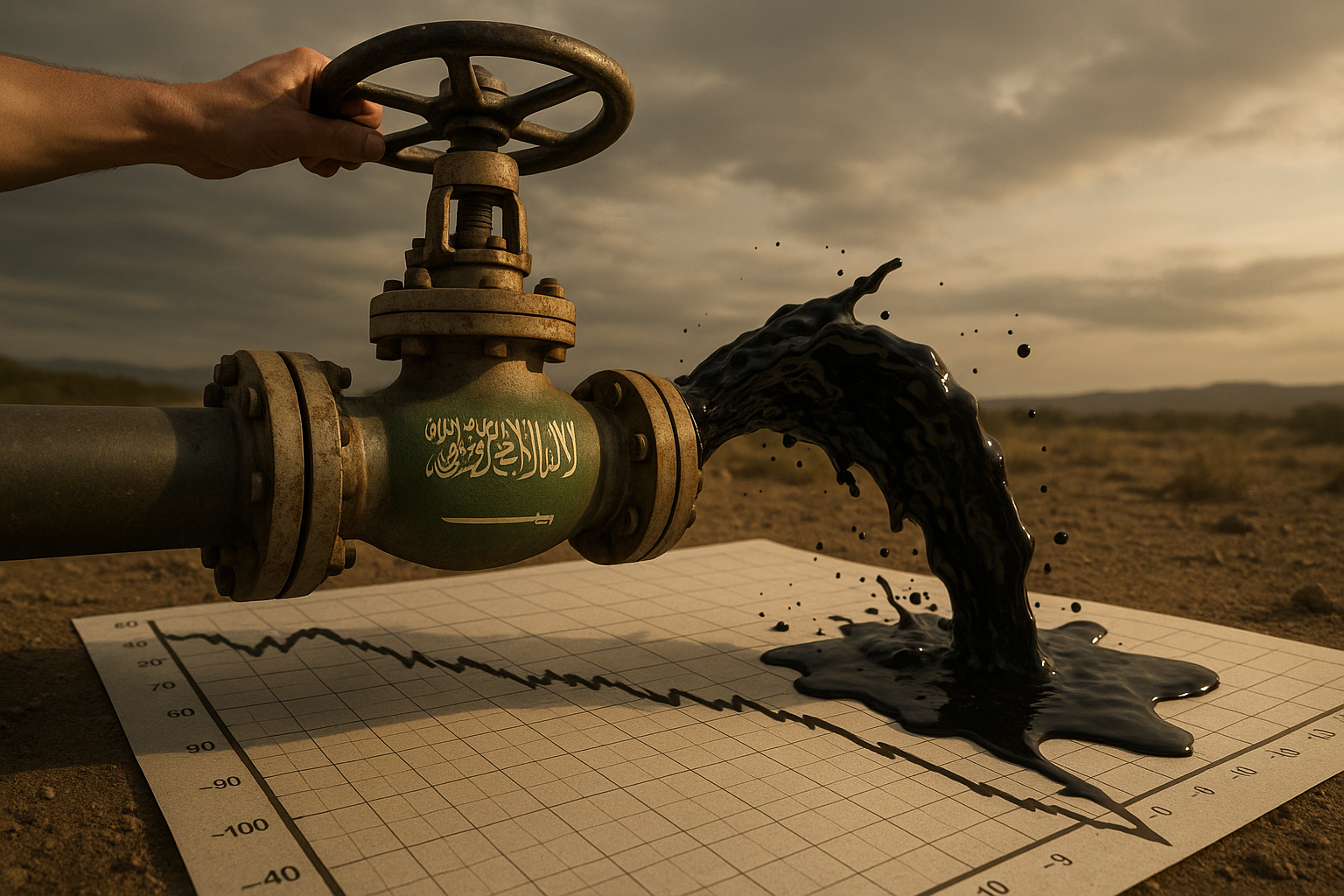The House of Saud has decided to open the spigots, and the oil market will never be the same. Or perhaps it will be exactly the same, just at a lower price point. Funny how that works.
This week Saudi Arabia announced a significant boost to oil production, effectively abandoning its previous strategy of supply constraint. The kingdom plans to increase output by about 2 million barrels per day to 12.3 million barrels—a level they've never sustained before. Markets reacted predictably: crude prices tumbled, with Brent falling below $35.
What's happening here is a textbook example of what I call the "alliance dilemma"—that awkward moment when cooperation breaks down and everyone races to serve their own interests. For years, Saudi Arabia and Russia maintained an uneasy partnership to prop up oil prices by limiting production. Then Russia decided it had enough of subsidizing U.S. shale producers who were happily eating their lunch while OPEC+ did all the hard work of market discipline.
Look, the Saudi decision is bold, even reckless. They're effectively starting a price war during a global pandemic that's already hammering demand. It's like deciding to have a water balloon fight while your house is flooding. The timing could hardly be worse.
But from Riyadh's perspective, the calculus makes a certain desperate sense. The model I find useful here is thinking about market share versus price optimization. Saudi Arabia has concluded that defending price through production cuts was becoming a losing strategy—they were sacrificing market share while watching competitors grow stronger. At some point, you have to protect your position, even at the cost of near-term revenue.
There's also a geopolitical dimension that can't be ignored. The Trump administration has been pressuring Saudi Arabia to keep oil prices moderate, particularly heading into an election year. Nothing makes American voters crankier than high gasoline prices, and Trump knows it. By flooding the market and crashing prices, Saudi Arabia is—perhaps unintentionally—delivering exactly what Trump wanted, though through an entirely different mechanism than he anticipated.
I mean, it's a gift to American consumers in the short run. Gasoline under $2 a gallon feels like a throwback to simpler times. But there's no free lunch in energy markets. The U.S. shale industry now faces existential threats. Many producers were already struggling with debt servicing at $50 oil. At $30? Well, bankruptcy lawyers should expect some busy months ahead.
The thing is, this isn't Saudi Arabia's first rodeo. They played this game in 2014-2016, driving prices down to squeeze out high-cost producers. The results were mixed at best. U.S. shale proved more resilient than expected, with producers cutting costs and becoming more efficient. The Saudis themselves suffered budget deficits and were forced to dip into reserves and borrow internationally. Which seems not ideal for a repeat performance.
What makes this time different is the demand side of the equation. Coronavirus has already decimated global oil consumption, with estimates suggesting a contraction of several million barrels per day in Q1. Adding a supply surge to a demand crisis is like prescribing weight gain to someone with the flu—technically possible but extraordinarily ill-timed.
For investors, this creates a fascinating set of second-order effects. Energy stocks are obviously getting hammered, but consider the implications for electric vehicles, renewable energy, and even geopolitical stability in oil-dependent nations. Venezuela, Iran, Nigeria, even Russia—they're all facing tremendous fiscal pressure at these price levels.
The conventional wisdom is that Saudi Arabia can't sustain this strategy for long. Their social spending requirements and ambitious economic diversification plans under Crown Prince Mohammed bin Salman require substantial oil revenue. But the kingdom has around $500 billion in foreign reserves and relatively low debt. They can weather this storm longer than many of their competitors.
Anyway, I'm not entirely convinced this ends quickly. Saudi Arabia and Russia are engaged in a game of chicken, and neither seems inclined to swerve first. Meanwhile, American producers are caught in the middle, wondering if their newfound energy independence might be more fragile than advertised.
Sometimes market corrections come from unexpected directions. The oil industry was already facing long-term existential questions about climate change and peak demand. Now it's confronting a more immediate crisis of its own making.
One thing is certain: in oil markets, as in life, stability is always more fragile than it appears.
